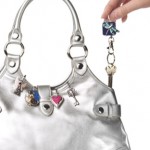
As a product entrepreneur you’ve spent a lot of time and money developing new products, whether physical or digital. Then one day you Google your product keywords, and up pops a page with your exact product on a Chinese website, or any website for that matter, with a different name. Someone is profiting off of your hard work!
I know how this feels. As an inventor with a patent and trade dress on a product I was shocked to see my own picture of me wearing my product on a Chinese website. As I looked further I saw even more of them. Some used my pictures and some even used the trademarked name.
Protecting intellectual property
I had noticed that business had slowed down quite a bit, but couldn’t figure out why. Now I knew. I spent the next few months contacting infringers to ask them to remove the product. Some didn’t know they were infringing and took it down. Some ended up becoming my customers and bought from me. But I had to fight the ones that were left. And even now I spend up to an hour every day knocking counterfeiters off the Internet.
So, how do you protect what you create from infringers? I posed that question to several product entrepreneurs who each had their own way of dealing with infringement.
Product entrepreneurs protect intellectual property

Sandy Stein – Finders Key Purse (r)
I invented Finders Key Purse(r) in 2004 while I was a flight attendant. I used my flight attendant friends to help me sell in to the retail gift industry, and in 2005 we sold 1 million units. Since this was done with my friends, we were sort of underground, but after those million units were sold, the copies came up instantly.
Luckily for me I had started the patent process when I first invented it in April 2004, so we had that to protect us but soon realized that it wasn’t much in the way of protection as the small companies would give up with a lawyer letter, but the bigger ones decided to keep going. We finally got our patent a few years later, and had to spend $1 million in legal fees to get one of the biggest infringers out of the market. Since Finders Key Purse(r) is our flagship item, I had to pursue this infringer at all costs, or he would have taken over the market with a similar product with a lesser cost. OUCH! We won-the infringer is no longer selling, but he went BK to get out of paying us.
Value of a patent
Lesson learned. If you want to get a patent, that is not too expensive. If you want to protect and defend your patent, that is extremely expensive, and you need to decide the value of the protection. Had we not had a patent, I am sure we would be out of business today with that infringer and several others who said that they didn’t want to battle me since my patent was so good and I was so litigious.
Sandy Stein
President
www.FindersKeyPurse.com
Intellectual property attorney

Stephen Lesavich, PhD, JD. – Founder & CEO of Coconut Avenue, Book Publishers, Intellectual property attorney, and technology expert
Here is what we do to protect our books:
A U.S. federal copyright application is filed for the content of all our books and the book cover as well.
Information on copyrights can be found at www.loc.gov/copyright This allows an infringer to be sued in federal court if the book contents or cover is copied.
If there is a tag line or branding associated with the book, a U.S. trademark application is filed.
This allows an infringer of a tag line to be sued in federal court if a tag line is copied.
Product entrepreneur protect intellectual property
Information on trademarks can be found at www.uspto.gov
<http://www.uspto.gov/>
Please note book titles cannot be trademarked.
Our books are also protected by U.S. Custom and Border Patrol Protection (CBP) once we have a U.S. registered copyright and trademark.
Such protection requires the U.S. copyrights and trademarks actually be formally registered.
Owners of registered trademarks
Owners of registered trademarks and copyrights can record their registrations with the CBP to thwart importation of infringing foreign goods
into the U.S. The recorded information is entered into an electronic database accessible at all 329 U.S. ports of entry. The CBP actively
monitors shipments to prevent the importation and exportation of infringing goods.
Information on this service can be found at: https://iprr.cbp.gov/
I just stopped an infringer from Canada from importing infringing e-books using this CBP service.
For our e-books, we include digital rights management (DRM) with our book distributors so our e-books cannot be copied or wholly printed.
E-books in digital files can be copied indefinitely.
Our current DRM practices allow only 10 pages of the e-book to be printed each 30 days. Our DRM does not allow our e-book files to be copied or altered.
DRM practices also require our e-books be registered in an e-book reader
(e.g., Nook, Kindle, iPad, Adobe Reader, etc.) to also prevent copying.
Click here to review the DRM information for one of our e-books from a book seller of one of our e-books.
Digital watermarks can also be used. We also digital water mark our book covers to prevent copying from the Internet.
Artists and intellectual property

Pam McMurtry – Author and artist
I am not an expert, but I am an artist who has experienced design theft. A wedding reception schema I designed was borrowed and used for almost ten years before I discovered it inadvertently. I wasn’t savvy enough to pursue it at the time,but would not let it slide again.
Another artist told me he hides his initials in drawings, kind of a secret monogram. He was able to successfully recover compensation in a court case when someone used his art in an advertisement without his permission. It is really hard in art because so much borrowing (stealing) of ideas goes on.
I do use digital watermarks by Digimark in my published work.